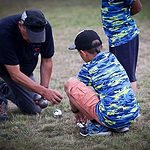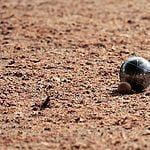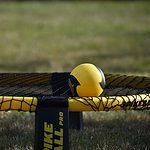If you want a job done well, you need to start with the right tools and techniques. But when it comes to finishing cornhole boards, the process can seem daunting.
From selecting the optimal finish to mastering the application method, each step plays a crucial role in the final outcome.
So, before you embark on this project, make sure you understand the ins and outs of finishing cornhole boards the right way.
Key Takeaways
- Sand boards thoroughly and apply multiple coats of polyurethane or polycrylic for durability.
- Use primer, semi-gloss paint, and gel stain for a vibrant finish.
- Prioritize safety and meticulous finishing techniques for a professional look.
- Maintain boards regularly to address imperfections promptly and enhance longevity.
Preparing the Cornhole Boards
Before starting the finishing process, ensure that the cornhole boards are thoroughly sanded with fine-grit sandpaper for a smooth surface. This step is crucial in achieving a professional and polished look for your cornhole boards.
Once the sanding is complete, it's essential to clean the boards meticulously to remove any dust or debris that could affect the finish.
When applying the polyurethane or polycrylic finish, use a brush to ensure even coverage. Applying multiple coats of the finish won't only provide protection but also create a glossy appearance that enhances the overall aesthetic of the boards. Remember to allow each coat to dry completely before applying the next one to avoid any bubbling or unevenness in the finish.
For a more refined finish, consider lightly sanding between coats. This additional step will help to smooth out any imperfections and result in a more professional-looking final product.
Sanding the Surface Smoothly
Smooth the surface of the cornhole boards using 120 to 220 grit sandpaper to achieve a professional finish. Start by sanding in a consistent direction to prevent uneven patches or rough spots on the board. Ensure to thoroughly sand the surface to remove any existing finish or imperfections. Pay attention to the edges and sides of the board, as these areas need to be sanded to achieve a uniform and smooth finish. After sanding, use a tack cloth to wipe down the board, removing any dust or debris before applying the finish.
When finishing cornhole boards, it's crucial to follow shop safety guidelines. Wear protective gear such as goggles and a mask to prevent inhaling dust particles while sanding. Work in a well-ventilated area to avoid breathing in harmful fumes from the finishing products, especially when using polyurethane. By prioritizing shop safety and taking the time to sand the surface smoothly, you can ensure a high-quality and durable finish for your cornhole boards.
Choosing the Right Finish
When considering the ideal finish for your cornhole boards, evaluate the benefits of polyurethane and polycrylic to determine the best option for protection and performance.
Polyurethane is a popular choice known for its durability and long-lasting protection. It typically requires 5-10 coats, with drying time between each coat, ensuring a robust finish that guards against scuffing, water damage, and chemicals.
On the other hand, polycrylic offers a glossy finish with just 2-3 coats needed for application. This fast-drying, water-based clear coating provides a sleek surface that enhances the appearance of the boards while also protecting them from wear and tear.
Both polyurethane and polycrylic can significantly improve the longevity and playability of your cornhole boards when applied correctly. Consider the level of glossiness you prefer and the application process that aligns best with your needs to make an informed decision for the perfect finish.
Applying Primer if Necessary
If you've selected the ideal finish for your cornhole boards, the next step is ensuring a smooth surface by considering the application of primer if necessary. Primer plays a crucial role in preparing the wood surface for paint or stain, helping to achieve a professional and long-lasting look. It acts as a base coat that enhances the adhesion of the paint or stain, preventing the wood from absorbing too much and ensuring a more even finish.
When choosing a primer for your cornhole boards, opt for a high-quality product suitable for outdoor use. This is important to enhance the durability of the finish, especially when the boards will be exposed to varying weather conditions. A good outdoor primer can also seal the wood, protecting it from moisture damage and increasing the longevity of the cornhole boards. By applying primer before painting, you can create a solid foundation for a beautiful and resilient finish that will withstand outdoor use effectively.
Painting the Cornhole Boards
For a professional and durable finish on your cornhole boards, it's essential to prepare them by lightly sanding before applying a coat of semi-gloss paint. Sanding ensures a smooth surface for the paint to adhere to, resulting in a more polished final look. When choosing paint, opt for semi-gloss for its durability and attractive finish. To add a personalized touch, consider using painter's tape to create stripes or designs on the boards before painting.
For optimal coverage and longevity, apply multiple coats of paint, allowing each layer to dry thoroughly before adding the next. This process helps achieve a more even and vibrant color on the boards.
Once the paint is completely dry, finish off the painted cornhole boards with a clear coat of polyurethane or polycrylic. This final step not only protects the paint from wear and tear but also provides a glossy finish, enhancing the overall appearance of your cornhole boards.
Staining the Boards for a Natural Look
To achieve a natural and rich look for your cornhole boards, consider using gel stain for a finish that highlights the wood's grain patterns and provides a deep color. Gel stain is particularly suitable for outdoor projects due to its durability and ability to withstand various weather conditions. Before applying the gel stain, make sure to lightly sand the boards to promote proper adhesion and absorption of the stain into the wood.
When using gel stain, it's recommended to apply at least two coats to achieve a more vibrant and consistent finish on your cornhole boards. This will enhance the richness of the color and further bring out the natural beauty of the wood. Allow each coat to dry completely according to the manufacturer's instructions before applying the next coat.
Sealing the Boards for Protection
Consider applying a protective sealant like polyurethane or polycrylic to safeguard your cornhole boards from wear and tear while ensuring a smooth playing surface. Sealing your boards with these finishes offers not only protection but also a professional touch to your DIY project. Here are three key points to keep in mind:
- Durability: Polyurethane and polycrylic provide a sturdy shield against scuffing, water damage, and exposure to chemicals. By sealing your cornhole boards, you extend their lifespan and maintain their pristine condition for countless games to come.
- Ease of Application: While polyurethane may require more coats and drying time, polycrylic offers a quicker solution with fewer layers needed. Both options are user-friendly and enhance the appearance and slickness of the boards efficiently.
- Enhanced Performance: The smooth surface created by polyurethane or polycrylic not only looks great but also improves gameplay. The slick finish ensures that the bags slide smoothly, enhancing the overall cornhole experience for you and your fellow players.
Adding a Polyurethane Coat
Wondering how to achieve a professional finish on your cornhole boards with polyurethane?
Polyurethane coatings offer a protective plastic layer that safeguards the boards against scuffing and damage, ensuring longevity.
To apply a polyurethane coat effectively, consider applying 5-10 coats with drying time in between to achieve a durable and glossy finish.
When applying the polyurethane, use vertical strokes to cover the entire board, including the sides and legs, for complete protection.
The cost of polyurethane for finishing cornhole boards ranges from $5 to $10 for half-pints, making it a cost-effective option for enhancing the appearance and slickness of the boards.
Proper application of polyurethane not only improves the aesthetics but also contributes to the overall gameplay experience by providing a smooth and durable surface.
Upgrade your cornhole boards with a polyurethane coat to enjoy a professional finish that will last for many games to come.
Buffing and Polishing the Finish
Buffing and polishing the finish on your cornhole boards can significantly enhance their appearance by creating a smooth and glossy surface. To achieve the best results, follow these steps:
- Use the Right Tools: Select a high-quality buffing pad or cloth specifically designed for finishing work. Pair it with a suitable polishing compound to effectively remove any imperfections and bring out the shine in your boards.
- Technique Matters: When buffing and polishing, remember to move the pad or cloth in circular motions. This technique ensures that the finish is evenly distributed across the surface, resulting in a consistent and professional-looking outcome.
- Enhance Color and Depth: Buffing and polishing can do wonders for the color and depth of your boards' finish. By investing time in this final step, you can elevate the overall appearance of your cornhole boards and give them a polished, refined look that stands out.
Final Touches and Board Inspection
Inspecting your cornhole boards for any imperfections or rough areas is crucial before applying the final finish. Ensure the boards are clean, free of dust or debris for a smooth finish. Prioritize shop safety by working in a well-ventilated area and wearing appropriate protective gear like gloves and a mask. When applying coats of poly, use a high-quality brush to achieve an even and professional finish. Allow ample drying time between each coat to ensure a durable and glossy final product. For the final coat of polyurethane or polycrylic, pay extra attention to detail to avoid drips or runs. Check the boards regularly during the finishing process and promptly address any imperfections for a flawless outcome. Below is a table summarizing key points for the final touches and board inspection:
| Key Points | Details | Importance |
|---|---|---|
| Inspect for Imperfections | Check for rough areas and drips | Ensures quality |
| Shop Safety | Ventilation, protective gear | Prevents hazards |
| Final Coat of Poly | Use high-quality brush evenly | Professional look |





